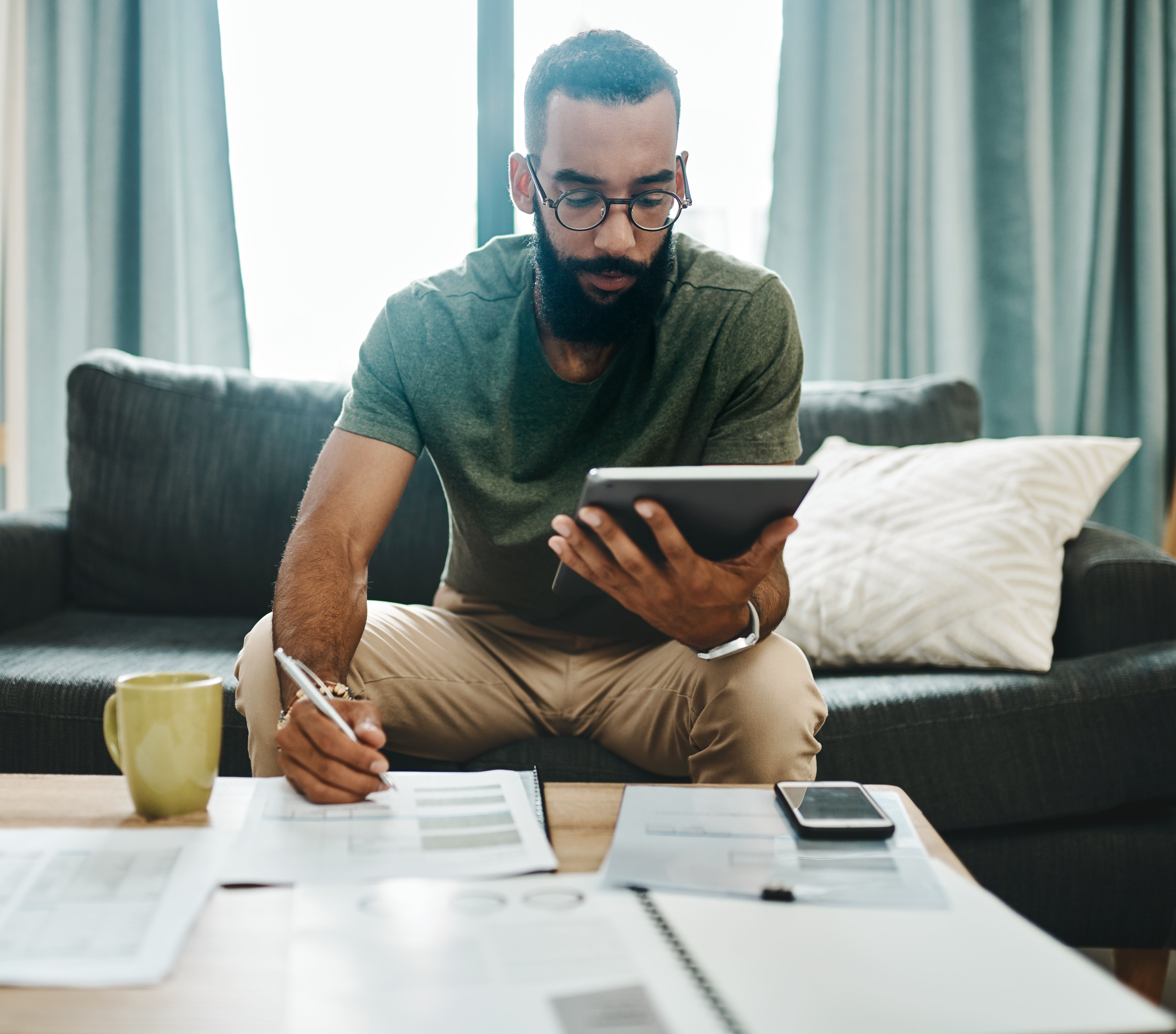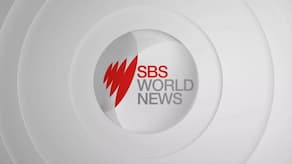The coronavirus pandemic has had far-reaching economic repercussions, impacting individuals and business across all sectors.
So as Australians begin a new financial year, many are thinking about doing their tax return for the previous one.
Almost 14 million Australian citizens and residents will lodge tax returns this year.
The Australian Tax Office (ATO) assistant commissioner Karen Foat says economic measures offered by the government to help navigate the pandemic make 2019-20 a very different tax year than usual.
"Lots of people are in a different circumstance this year, so people might have income types that they’ve never had before and also people might be entitled to different deductions than they are usually," she told SBS News. "We do expect to see a significant spike in working from home claims, but there are areas where we expect claims to go down, for instance, work-related travel."
"We do expect to see a significant spike in working from home claims, but there are areas where we expect claims to go down, for instance, work-related travel."

A young man going over his finances ahead of tax time while working from home. Source: Getty
The ATO is expecting an increase in work-related expense tax deductions and rental property claims.
How do I do my tax return?
Officials warn if you are doing your tax return yourself, it is imperative to link your to the ATO’s online .
If you are an individual lodging your tax return, you need to lodge it by 31 October 2020. If you plan on using a tax agent you need to be one of their clients before that date.
Ms Foat says the ATO recognises that Australians have experienced significant challenges this financial year, therefore extra support is available for all communities.
"We have a range of information and help available to make doing your return easy, including in other languages. You can go to or if people want to speak to the ATO in their own language they can call our translating service on 03 9268 8332."
What can you claim if you've been working from home?
You can’t claim your mortgage, rent, tea or coffee, food or expenses associated with schooling from home.
You can though, claim the cost of supplying electricity for heating, cooling or lighting to the room in which you were working, but only for the number of hours worked.
You can also claim the cleaning costs for your dedicated work area and furniture for your at-home working space.
There are three methods you can choose to do your tax return.
- The temporary short-cut method allows you to claim 80 cents per hour for every hour you worked from home between 1 March and 30 June.
Experts say the short-cut method is the easiest way to make a claim for your working-from-home expenses, which also include phone, internet, lighting, heating and depreciation on equipment.
It covers deductible expenses and can be used by multiple people working in the same house.
If you were required to continue working in an office or workplace then you can claim a deduction on protective items, such as gloves, face masks, hand sanitiser and anti-bacterial spray, if you were not reimbursed by your employer for purchasing these items.
The ATO says there are three golden rules with expenses: you must have spent the money and not have been reimbursed, it must be directly relevant to you earning your income, and you must have a record to prove it.
Taxpayers can still choose to use the other existing methods to calculate their expenses for working from home.
- The Fixed Rate method, also known as the 52 cents method, is where you claim 52 cents for every hour worked at home to cover the costs of electricity, gas and home office furniture, then add in separately the costs for phone, internet, stationery and depreciation of equipment.
- The Actual Expenses method requires you to individually calculate the work-related portion of all costs you have incurred working from home.
Should I get help with my tax return?
Elinor Kasapidis is a tax policy advisor for CPA Australia, one of the world’s largest accounting bodies.
She says tax agents can assess your circumstances and advise the best way for you to file your tax return.
“Their role is to help smooth it out, they know the ins and outs, they know what tax concessions and tax benefits might be available, and they know how to get it right because tax can be complicated.
"You could walk in with your paperwork and they will help you navigate what you are able to claim, find those little bits and pieces you might not know you are eligible for and to reduce your tax bill legally.
"If you are having difficulties with a payment arrangement or you need to catch up on a few years worth of tax, an agent can help you through that process and speak to the tax office on your behalf to help resolve some of those issues and find a way forward for you.”
Many people though, complete their tax return on their own.
What if you are on JobKeeper?
People who have received JobKeeper payments from their employer do not have to do anything different because the payments will be included as salary or wages earned in your regular income statement, also known as Payment Summary, which can only be accessed via your MyGov account.
If you use a tax agent, they also have access to this information.
Ms Foat says the situation is different if you are a sole trader.
“If you receive JobKeeper as a sole trader you need to add it into your business income, that is really important," she said.
What if you are on JobSeeker?
If you are receiving JobSeeker and the coronavirus supplement you will have to declare it as income when you do your tax return.
It is a taxable payment but it varies per person, depending on whether you are earning other income.
"The ATO will automatically include it in tax returns for you at the Australian government payment and allowance inspection, it’s normally ready by early July but if you’re lodging straight away in July you do need to check that information is in there for you," Ms Foat said.
If your employer provided you with a stand-down payment before JobKeeper became available, that will be included as part of your salary or wages.
What if you accessed your superannuation early?
If you received early access to superannuation, any amounts withdrawn are tax-free, so you do not need to declare them in your tax return.
Daniel Floyd, a 44-year-old from Sydney, has been working for 13 years as a flight attendant. The pandemic grounded his career and finances.
Mr Floyd also has a business providing entertainment to clubs by hosting bingo events, and while he began performing drag shows online when the gigs dried up, he had to dip into his superannuation to meet his mortgage payments. "This is the most stressful, unsettling thing I have ever been through, we have nightmares every night, I would have lost 100 per cent of my income, so yes, it is a relief," he said.
"This is the most stressful, unsettling thing I have ever been through, we have nightmares every night, I would have lost 100 per cent of my income, so yes, it is a relief," he said.

Daniel Floyd in character. Source: Supplied
"I'm taking my super out and then putting it into my offset mortgage account so I won't touch it, and hopefully I'll go back to flying and then can pay that straight back into super."
What can you claim if you have a rental property?
More than two million people have rental properties in Australia and more than 60 per cent of properties are negatively geared.
Many tenants are paying reduced rent or have ceased paying because their income has been adversely affected by COVID-19.
“We know that a lot of landlords have been receiving reduced rent or some rent has been deferred, but they might still have the same expenses, so it’s reasonable to expect that some rental property owners might have an increased loss this year.”
Rent will be included as income at the time it is paid, meaning that if payments are deferred until next financial year then they should not be included. But insurance payouts that cover loss of income should be included in tax returns. While many banks have deferred loan repayments for those suffering mortgage stress, interest being charged on those loans is still a legitimate tax deduction.
While many banks have deferred loan repayments for those suffering mortgage stress, interest being charged on those loans is still a legitimate tax deduction.

An aerial view of properties in a Western Sydney suburb. Source: Getty
Australia’s largest provider of tax depreciation schedules says lucrative tax benefits provide a financial boost for investment property owners.
Owners of income-producing properties can claim sizeable tax deductions, known as property depreciation.
CEO of BMT Tax Depreciation Bradley Beer says depreciation deductions are game-changers and you should get your depreciation schedules sorted right away if this situation applies to you.
“The average of the first half of the year and the jobs we did last year was about $9,000 in deductions, it’s a non-cash deduction which means a fair bit of cash.
"You get the depreciation schedule done, then get the tax return filed as soon as possible and depending on the tax rate you could receive a $9,000 deduction ... This means a few thousand dollars extra at a time when it’s most needed."
Where can you get further support?
Dr Ann Kayis-Kumar is a leading Australian researcher on tax issues faced by people and small businesses in financial distress.
She is also the founding director of the University of New South Wales Tax Clinic - a free, independent and confidential tax service providing advice and support to Australians.
“One of the three biggest themes that we’ve seen is the psychological burden of having to deal with taxes," she said.
"A lot of people have many years of outstanding returns, so it gets to a point after a few years where it gets very overwhelming and that makes it even harder to get back on track - and there’s an aspect of uncertainty.
"There’s the which is free and run by the ATO and there's independent professional advice by tax professionals, but there is a gap between those services.”
CPA's Ms Kasapidis says 2020 has been a one of a kind year.
“It has been an incredibly disruptive year, even prior to the bushfires there was drought and floods which have had a sustained effect on people’s livelihoods, both financially and mentally."
"Tax time this year will bring a lot of those issues to the forefront of the ATO’s mind and the government’s mind, therefore they need to have a sympathetic approach in understanding where people are right now and the events they have gone through and understanding the difficulties facing Australians."
People in Australia must stay at least 1.5 metres away from others. Check your state’s restrictions on gathering limits.
Testing for coronavirus is now widely available across Australia. If you are experiencing cold or flu symptoms, arrange a test by calling your doctor or contact the Coronavirus Health Information Hotline on 1800 020 080.
The federal government's coronavirus tracing app COVIDSafe is available for download from your phone's app store.
SBS is committed to informing Australia’s diverse communities about the latest COVID-19 developments. News and information is available in 63 languages at




